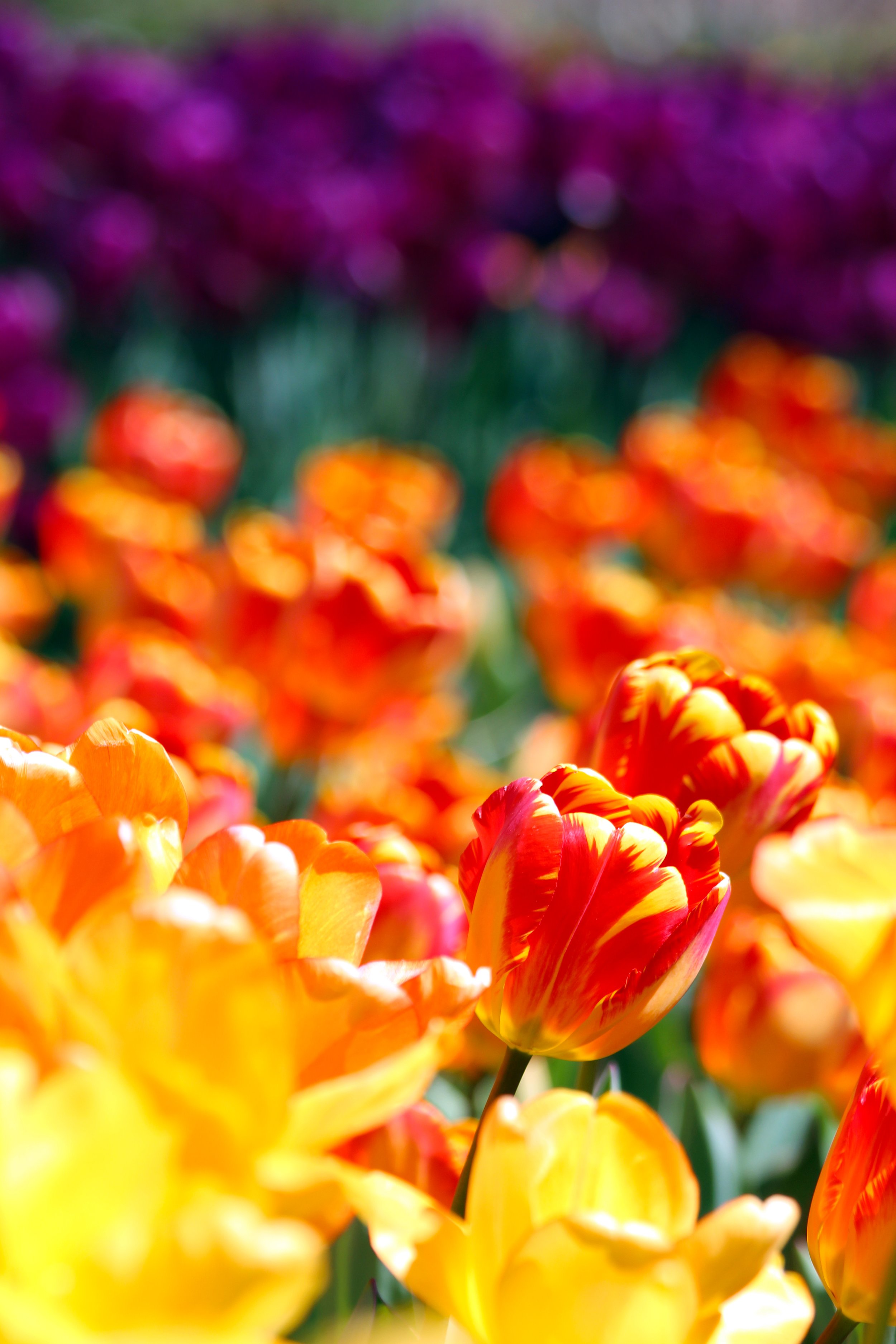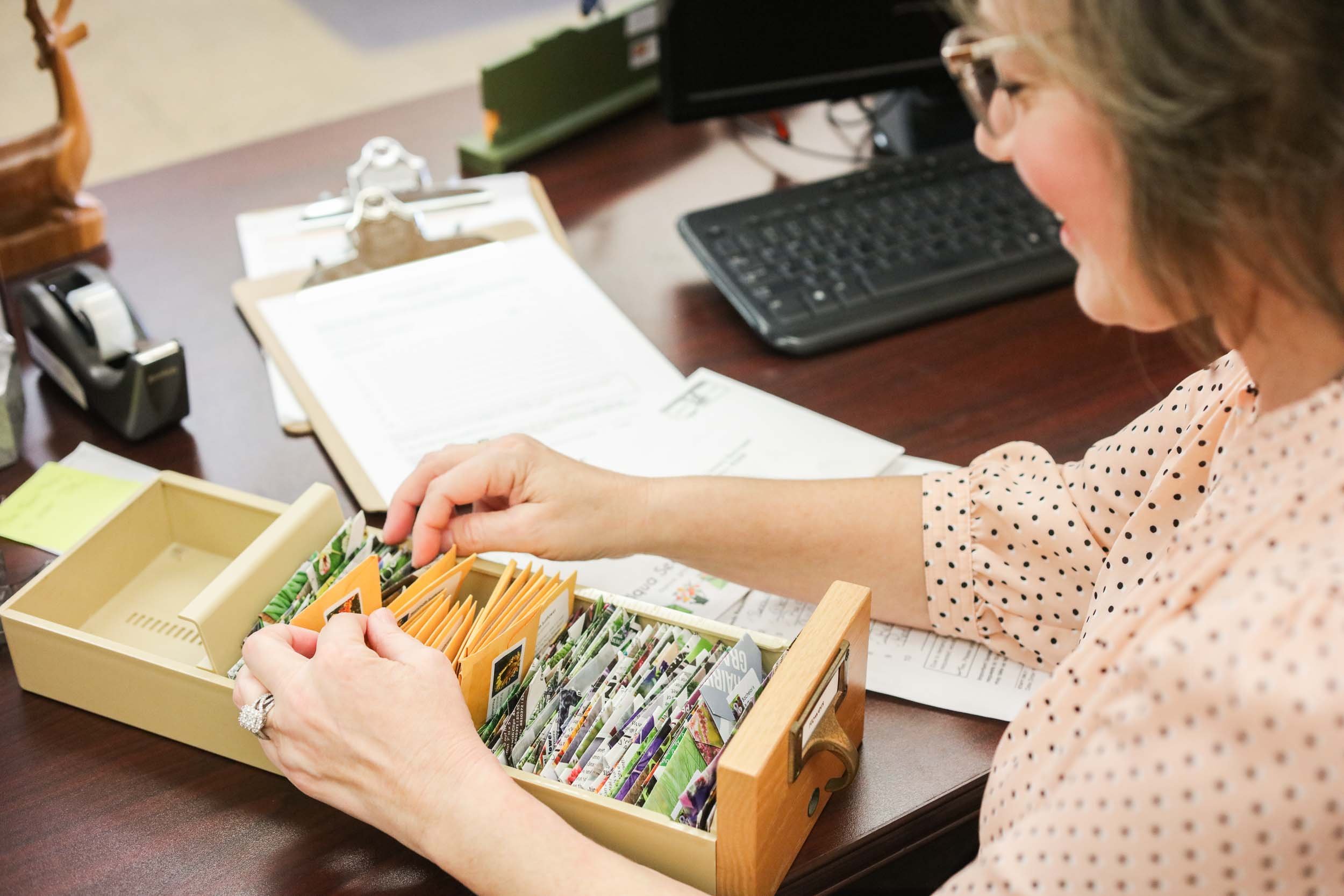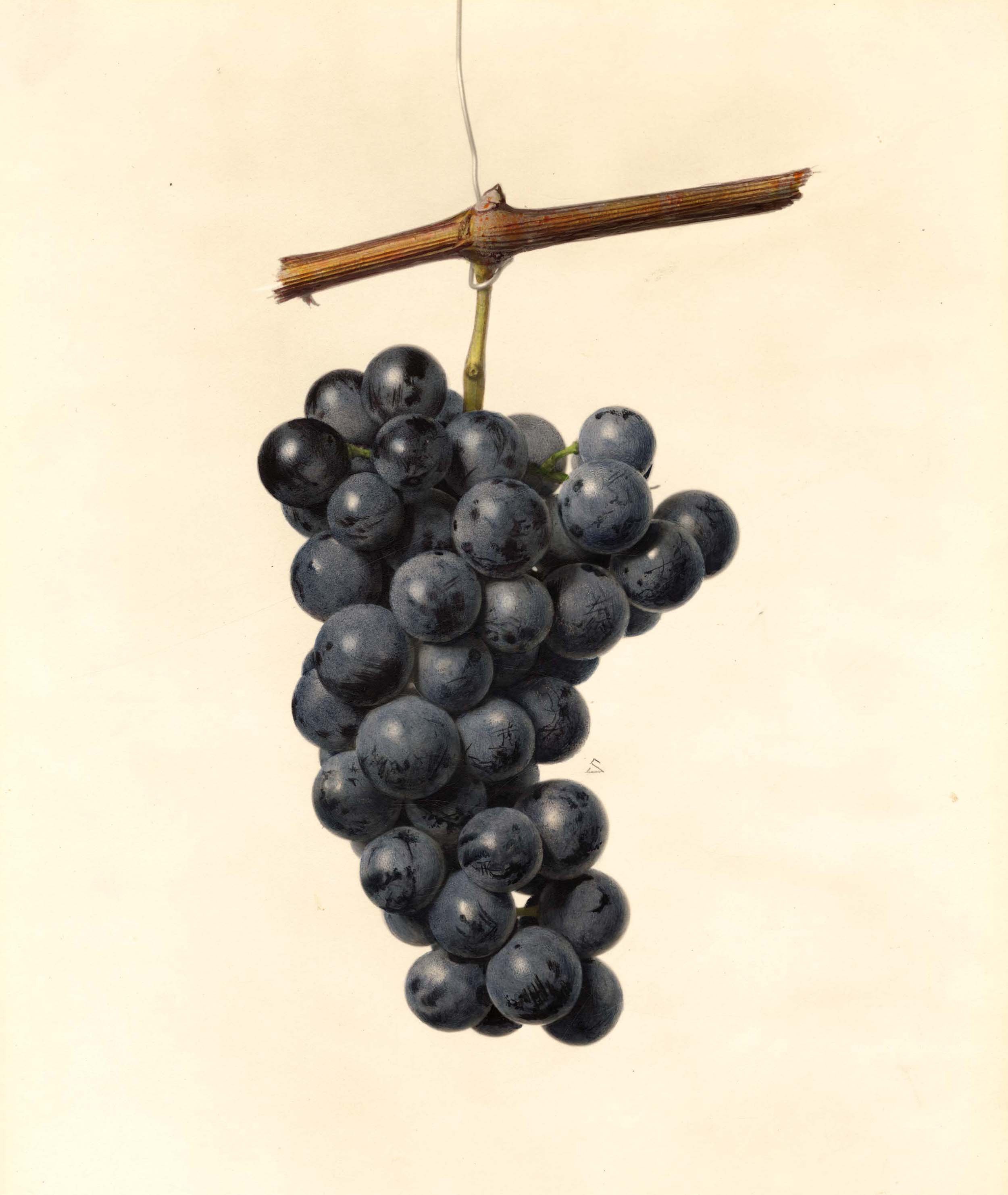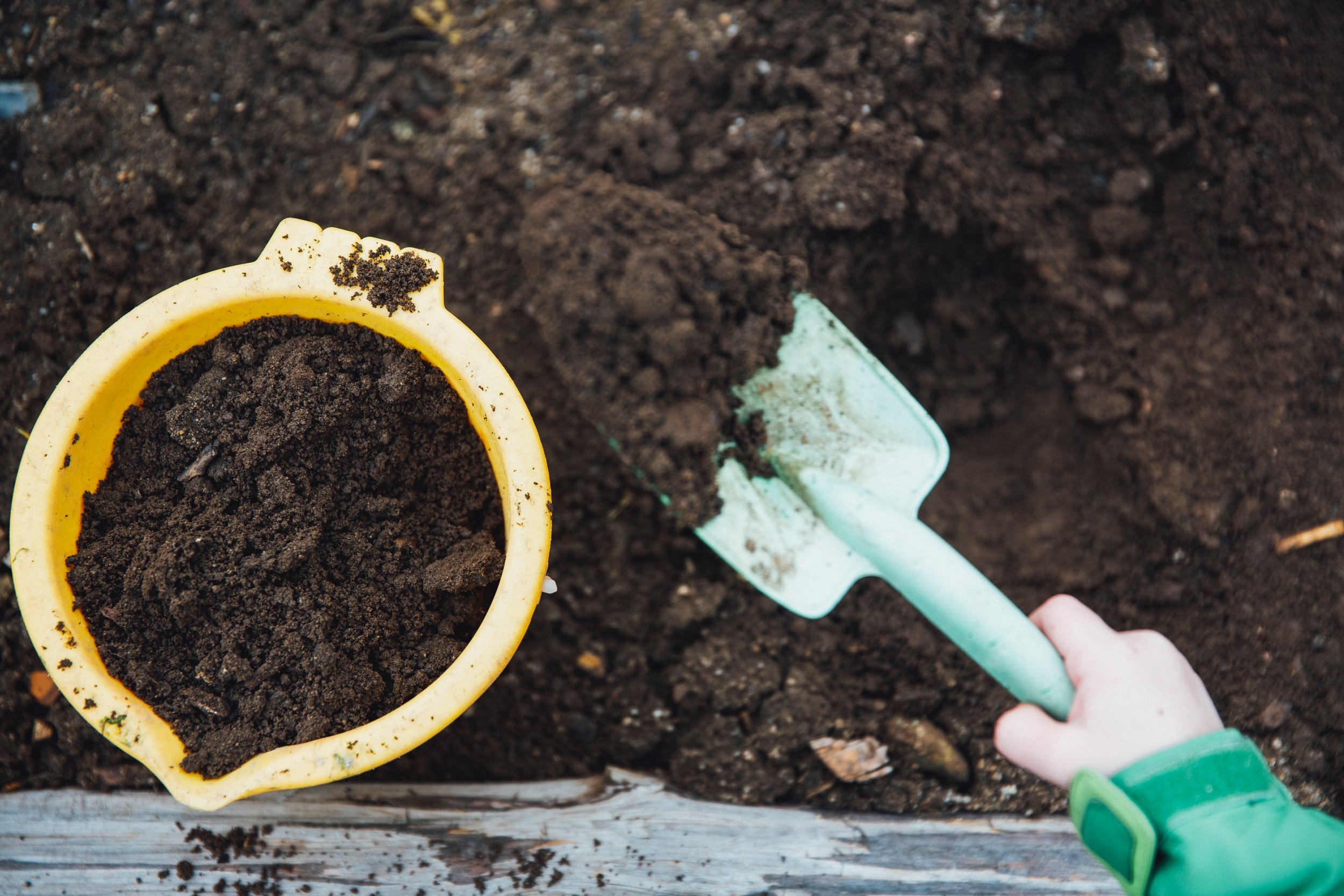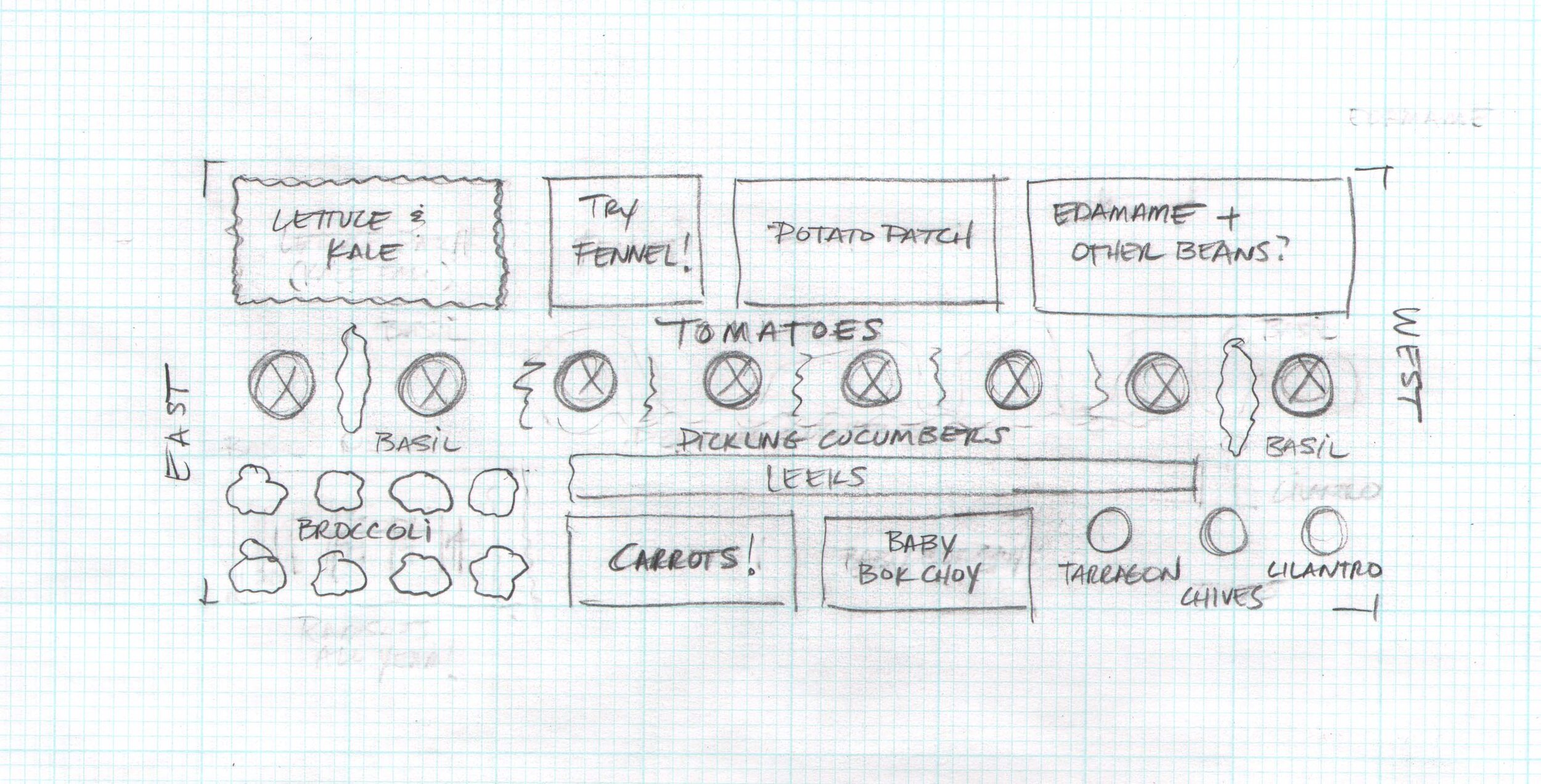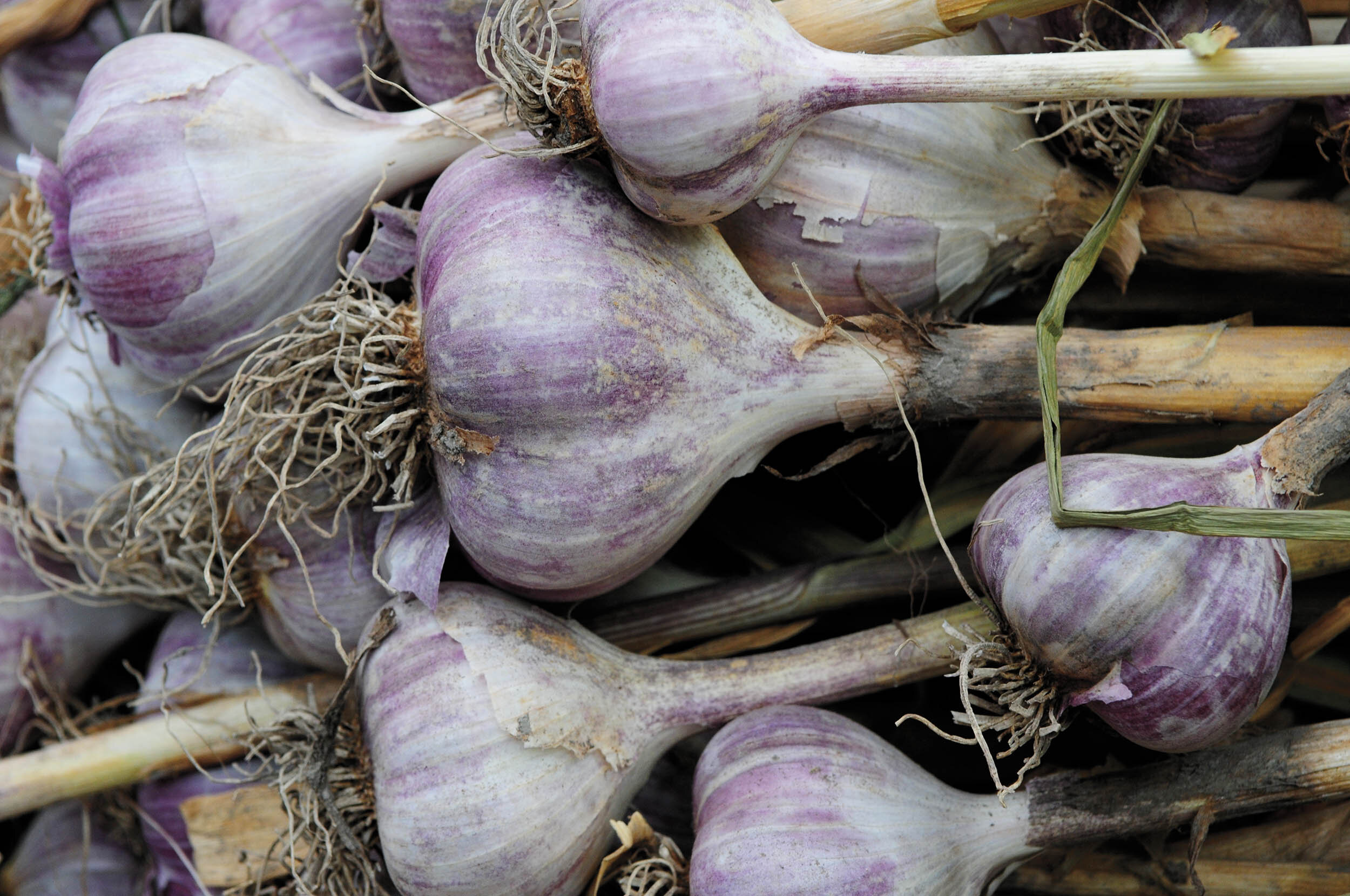The Spring Garden

The trees are coming alive in my yard — all of whose pollen I’m conveniently allergic to. No matter. I can take quite a bit of sneezy, watery-eyed misery in exchange for being back out in the dirt and sunshine again. Spring is here, at last, and gardeners everywhere are kicking up their heels.
Plan And Prepare
After a long winter of waiting, waiting, waiting, spring is a season of action: it’s time to set the planning notebook aside and go out and get dirty.
The primary spring preparation task is getting your garden beds in shape. Whether you’re building a new, raised bed from scratch, or reusing an existing plot, soil health should be your focus. We had a light amount of winter snow this year, with plenty of rain, so your garden soil is likely to be compacted. Before planting, loosen the soil by digging deep and turning it over, working in plenty of compost as you go. (I’m not a fan of tilling – and, as a home gardener, I have the luxury of choosing hand-turning over mechanized – but if that’s your preference, do it. I’m far more interested in spreading the word about growing home vegetables than arguing the pros and cons of tilling.)
Whatever your method, make sure that you go sufficiently deep — about 12” — in sections that will house root vegetables, especially carrots. They require aerated, yielding soil to grow straight and long underground.
Hardiness Zones vs. First/Last Freeze Dates
If you’re new to gardening, you’ll no doubt notice many references to “hardiness zones,” or the hardiness zone map, as you’re researching and purchasing plants. This map, created by the USDA, divides the U.S. into 11 zones, assigned according to an area’s average lowest temperature. These zone designations are useful for classifying plants that can survive each zone’s winters. Rosemary, for example, cannot survive outside in our typical zone 6 winters, but it will readily outlast a zone 8 winter and grow into a lovely, enormous shrub.
In 2012, the USDA turned many heads when it issued a revised hardiness zone map. Sections of our area — and many regions across the U.S., in fact — have slid into new half-zones – in our case zone 6b, which is 5 degrees warmer than our former 6a classification. Aside from sparking interesting debates about the source of climate change (man-made vs. natural earth cycles), our zone designation doesn’t have much useful influence on the typical home gardener’s growing season, where annual vegetables — vegetables raised for just one growing season — are the stars of the show.
Tomatoes, for example, will not grow unprotected in cold weather, which applies to all but the most southern hardiness zones of our country. Therefore, knowing that our region lies in zone 6a/6b is of no particular help to tomato gardeners like me, because we don’t expect tomatoes to survive the winter.
A much more critical and useful measure is our area’s last freeze date in the spring, and the first freeze date in the fall. Temperature sensitive plants should not be set out in spring while there is still a threat of frost. (You’ll often find this warning on seed packets.) Likewise, many plants cannot be expected to survive once the cold sets in, late in the fall. A vegetable’s full growth cycle must be scheduled between these two events, taking into account its tolerance for mid-summer heat.
Long-time gardeners have noticed for years that the growing season has extended at both ends, with killing frosts ending earlier in the year and beginning later. May 15th (or the more general and easy to remember, Mother’s Day) used to be the magical thumbs-up date for planting temperature sensitive crops outside, but now, if I don’t have my garden fully set by the end of April, I feel like I’m running behind schedule. Although there is still the risk of a freaky frost leveling your plants in April, for what it’s worth, I’ve never lost a plant to a spring frost. (For the record, our approximate last spring frost date is April 15 and our approximate first fall frost date is October 15.)
Plant and Tend
Spring is a very busy season, indoors and out. Since I grow many vegetables from seed, April is a month of transitioning seedlings from their cozy, skylight-lit, controlled environment to the unpredictability of the outdoors. After hovering protectively over seed trays for two, sometimes three, months, it’s time to set them in the earth and see what happens.
Spring is also an extra busy time out in the garden, requiring two seasons worth of plantings in one short stretch. Spring vegetables are fast-growing and quick to harvest, and on top of that, you must also set summer’s vegetables in the ground, if you’re ever to hope for a ripe tomato before September.
Most spring vegetables can go in the ground as soon as the soil has thoroughly thawed. Use the sowing and planting information on your seed packets or transplant pot as your timing guide for each crop.
For summer vegetables, as I mentioned above, late April is a completely reasonable goal to begin planting, should rain-free days cooperate.
If your schedule delays you until May, aim to finish up by mid-month. Summer’s vegetables require much longer development periods than spring’s. If you have yet to choose whether you’ll sow seeds or purchase transplants, now is the time to firm up those decisions. Below are charts of common spring-planted vegetables and herbs that thrive in our climate and are welcome additions to our spring and summer diets.
I’ve included advice on whether to grow from seed or buy as transplants, and whether an herb or vegetable is best grown in the ground or in a container on your sunny patio or deck. Note that, with determination and extra nutrient care, just about anything can be grown in a container, but some vegetables just thrive far better in the earth. Most local garden centers are well stocked with summer transplants by mid-April, if you choose to go that route.
Meanwhile, don’t forget any vegetables you planted last fall or late winter. Garlic and shallots will already be well into their growth cycle with green shoots well above ground level. Garlic benefits greatly from frequent, light fertilizing in early spring. Although an arguable topic — and believe me, gardeners debate each other constantly about methods and philosophies — I find that garlic plants are heavy feeders, and only the most perfectly balanced soil will be able to keep up with their voracious appetites. It takes quite a bit of energy to form a bulb full of juicy cloves, and since soil perfection is difficult to achieve, it’s better to not risk an entire crop of under-developed bulbs.
If you planted seed potatoes and onion sets earlier, you’ll see signs of growing activity from the onions, as their green shoots revive from the trials of shipping and transplanting. Potatoes will send up their greenery later, as summer approaches.
Harvest
Cool weather vegetables have most unusual lifecycles: they’re very fast and very short. Unlike herbs and summer vegetables, many spring veggies sprout, grow, and are ready for harvest in the same season, often within a single month. (Perennials, such as asparagus, horseradish, and rhubarb, are the exception, surviving their off -season and re-growing each spring on their own.)
Radishes, sugar snap peas, and salad greens are spring staples at my house. While the speed of lettuce growth is no particular surprise — it’s only pushing out leaves after all — it’s radishes that capture my spring veggie heart. Maturing from seed in less than a month, they emerge from the ground in beautiful shades of neon pink, red, and purple, or icy white and pale green with pink interiors — a miracle of color even as snow lingers fresh in the memory.
Spring is also the time to clean up stray veggies left from the previous year. By spring, leeks — which, as I’ve mentioned in an earlier article in this series, can be harvested all winter long — will begin a new growth spurt with the fi rst sustained period of warmth. Once this new cycle begins, leeks are no longer flavorful, and need not be pulled for cooking. However, you can pull them — divide them, if they’ve sent out side-shoots or bulbils — and replant all again (including the bulbils, which become their own plants).
Carrots overlooked the previous year will send up shoots that go to seed (collect the seed for next year’s garden). Th e same applies to fl at-leaf parsley, which grows alarmingly tall and quickly goes to seed.
With the garden planted, I’ll be welcoming summer with open arms and waiting eagerly for that fi rst ripe tomato. Here’s to daydreaming about tomato, basil, and mozzarella salads.
A handy guide for buying seeds or transplants.
Karen is a four-season vegetable gardener and seed-totable advocate, blogging at SoupAddict.com. Her current garden crushes include black heirloom tomatoes, dill, lovage, and a small bay laurel shrub that flavors her soups. Her most heartfelt wishes are for world peace (of course), kindness to animals, bike lanes in Anderson, and for everyone to grow something edible at home.

